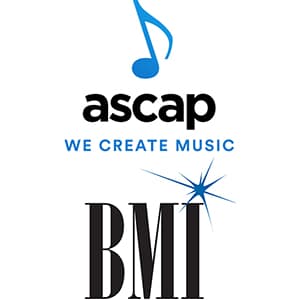
Broadcast Attorney John Garziglia’s number one issue from his November 23, 2017 Radio Ink column entitled “10 Radio Legal/Regulatory Issues for the Next 10 Years” was “Music Rights Issues.” In light of the BMI/ASCAP Joint letter distributed Thursday, we reached out to John to get his perspective on how this issue impacts you and your radio station. Here’s what he had to say…
“This joint BMI/ASCAP letter suggests four themes: (1) both entities very much like the status quo; (2) any change to the status quo should give both entities a greater ability to set their own (higher) rates; (3) fractional licensing in which broadcasters and other music users should not be given any assurance that licensing a song through either entity gives a right to perform the song; and (4) broadcasters and other music users should not have any blanket right to any particular song. Themes #3 and #4 merit the most discussion.
BMI and ASCAP continue to argue in favor of the fractional licensing scheme for songs in which each songwriter owns an undivided piece of it, even though it is impossible to play just the fraction of the song that a songwriter may claim to own. The argument in favor of fractional licensing is that each songwriter should be able to seek his or her own compensation through whatever performing rights organization he or she wishes. But, the flip side is that, if a radio station does not track down and obtain a license from each individual songwriter, the radio station is liable for statutory damages of up to $150,000 per play for playing a song without a license from all songwriters who claim ownership in the song.
As I noted in my January 12, 2017 Radio Ink article “This RMLC/GMR Fight Is No Joke,” fractional licensing results in an impossible burden on radio stations for each song played to determine whether they have a license for each songwriter, rather than for the song itself. As an example, if Peter, Paul and Mary are co-songwriters for a particular song, BMI could represent Peter’s portion of the song and be paid a fee, SESAC could represent Paul’s portion of the song and be paid a fee, and a radio station could still be sued for the $150K statutory damages for playing the song if Mary licensed her portion of the song without notice to a newly formed performing rights organization.
With respect to blanket licenses, radio station owners love to complain about government regulation. But, with songwriters, DOJ oversight through its consent decrees insures that radio stations with ASCAP and BMI licenses (along with SESAC, and more recently GMR and PRO licenses) can play just about any song for a known flat blanket fee and be protected from potential massive claims of copyright infringement.
None of this concerns the completely different set of issues with musical recording performance fees. The two should not be confused. BMI and ASCAP represent songwriters. Musical recording performance fees, for which radio stations are now exempt from paying, are a completely different copyright concern, and are often referred to as simply a “performance fee.”
The BMI/ASCAP letter is an opening salvo into a discussion that is now taking place within the Department of Justice, and possibly later in Congress, as to how the current songwriter copyright licensing legal scheme is administered. No matter what is done now by the Department of Justice with respect to the decades-old consent decrees, it will likely be Congress that will determine the long-term future legal structure of music licensing. It is highly important for our radio broadcasting industry to forcefully, and with sufficient resources, maintain its healthy lobbying efforts on Capitol Hill.”





